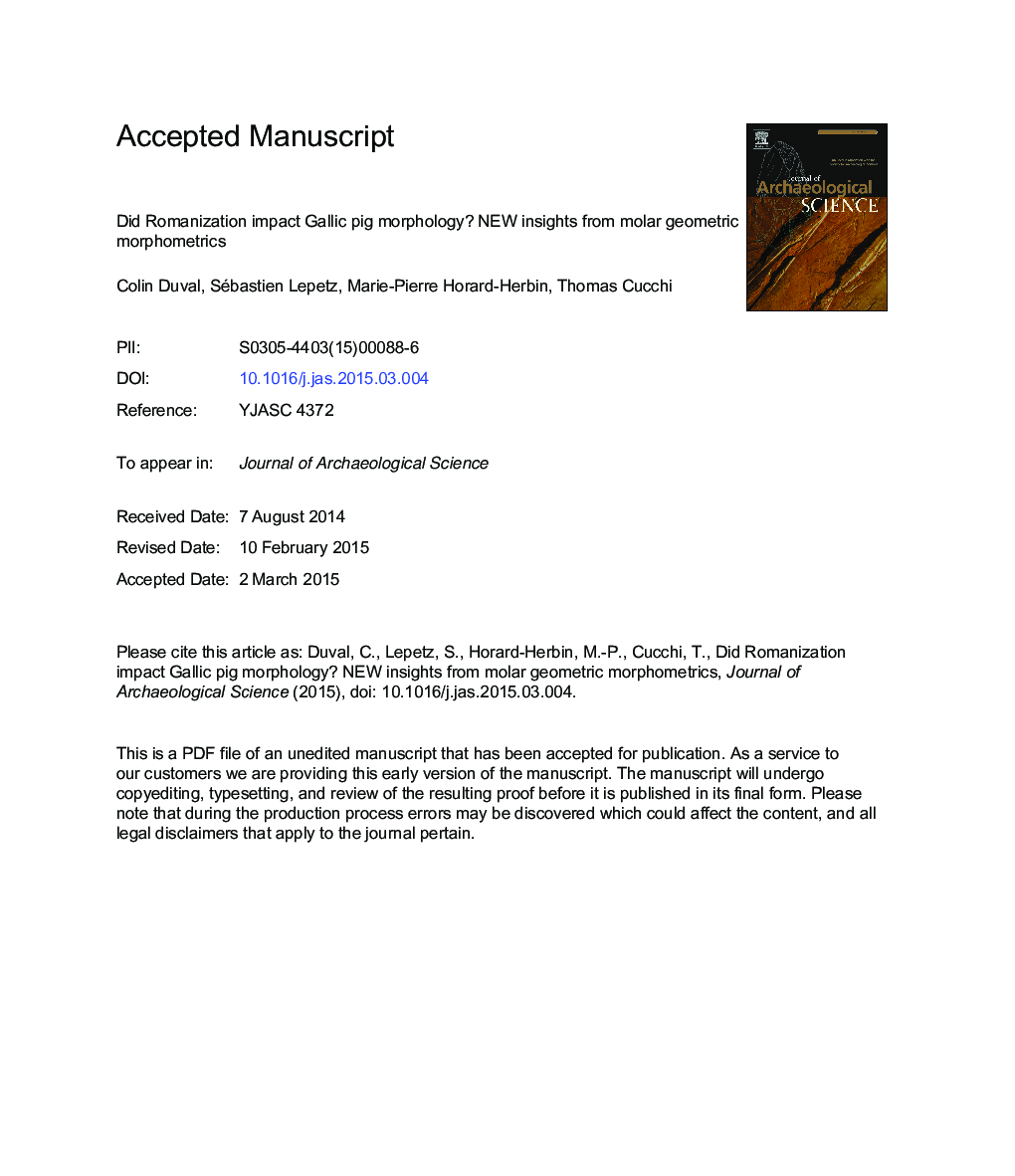| Article ID | Journal | Published Year | Pages | File Type |
|---|---|---|---|---|
| 7442117 | Journal of Archaeological Science | 2015 | 30 Pages |
Abstract
In Western Europe, at the turn of our era, the emergence of the Roman economic and agropastoral model is considered as the trigger for morphological changes experienced by livestock. This assumption is now undermined, reviving questions of the origin and mechanism of these changes as well as the influence of Gaul's agricultural particularities in the process. To investigate this question we used a geometric morphometric approach to study the phenotypic relationships of almost 600 dental remains of pigs (Sus scrofa domesticus) from 11 Gallic and Italian sites, and pinpoint evidence of Roman or indigenous signature on the livestock. The comparison of these different samples allowed us to demonstrate that the link between the Roman and Gallic pigs is weak, and, more importantly, that each of the two territories seem to follow its own livestock management model. Furthermore, each region or settlement within Gaul adopted their own particular pastoral or supplying strategies; apart from two urban sites of central Gaul which showed clear phenotypic relationships with southern populations. These results suggest that the pigs' morphology depended mainly on agricultural and economic characteristics of the different territories, within Gaul and Italy, except perhaps on some urban sites with different supply strategies. It seems, therefore, that the changing economic environment impacted both provinces independently, or at least differently, since it cannot be excluded that there may have been some commercial relationships between them.
Related Topics
Physical Sciences and Engineering
Materials Science
Materials Science (General)
Authors
Colin Duval, Sébastien Lepetz, Marie-Pierre Horard-Herbin, Thomas Cucchi,
